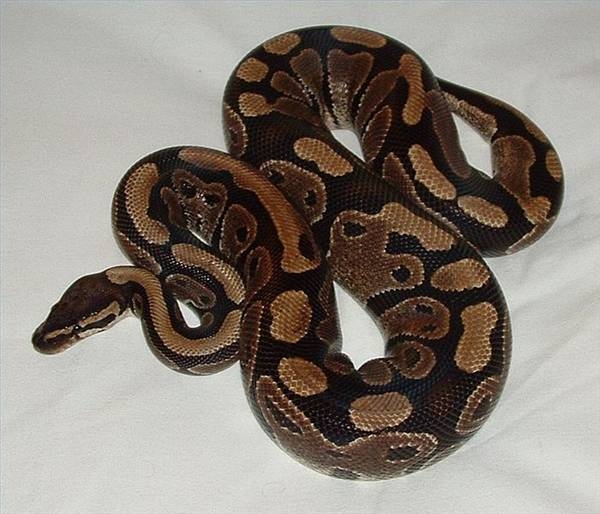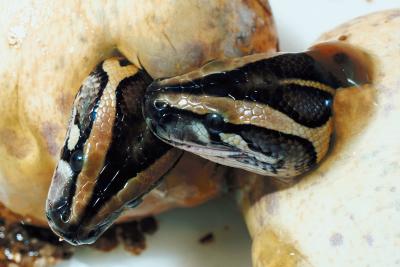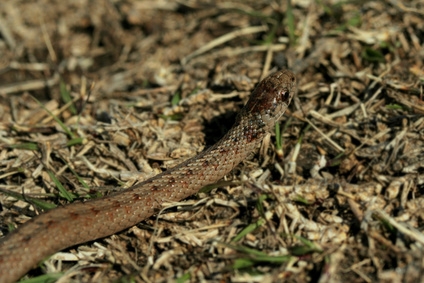
How to Clean Snake Cages. Having a pet snake is not as unusual as it used to be. These easy-to-care-for pets are gaining in popularity as more information pertaining to their care and keeping becomes readily available. They don't chew shoes, need walking or shed hair on the furniture. All they require is a proper diet and a clean, comfortable habitat. Maintaining a routine schedule for cage cleaning will go a long way toward helping your snake to stay healthy and content with their environment. The guide below will walk you through the steps you need to follow to keep your snake's cage tidy.

Perform daily cleaning tasks: Remove any food scraps and note any change in eating habits. Dispose of any waste material or soiled substrate. And pour out the contents of the water and food containers. Wash the containers with antibacterial soap, rinse thoroughly in hot water, and treat with disinfectant. Allow them to air dry prior to refilling and replacing them.
Once a week, remove the snake from his cage and place him a large box or escape-proof container in another room, so he will not be affected by any fumes created during the cleaning process.
Remove everything from the cage, sorting out such things as toys, large rocks and landscaping items. Set them aside on sheets of newspaper for further cleaning.
Get rid of waste products, unfinished food items and any soiled substrate. Examine sand and gravel carefully to be certain that you have collected it all.
Take all items which have been contaminated with waste products from the house immediately to avoid accidental transfer of undesirable bacteria or other contagions to household surfaces.
Sponge the walls down using antibacterial soap and hot water, paying particular attention to the corners. Scrub any problem areas with a toothbrush that has been dipped in baking soda.
Rinse the cage with white vinegar. Then rinse again with cold water. Invert to dry.
Place all large rocks in a pan of boiling water. Boil for 30 minutes. Remove, drain and cool on a clean towel.
Arrange branches or decorative wood on a baking sheet and place in the oven for 30 minutes at 250 degrees F.
Rinse any unsoiled gravel or sand and spread it on a baking sheet. Place the sand in the oven beneath the branches. Bake for 45 minutes at 250 degrees F.
Wash all toys and decorative items in antibacterial soap and rinse with hot water. Allow all items to air dry on a clean towel.
Prepare a bucket of mild disinfectant by combining 1 cup of chlorine bleach with 1 gallon of water.
Take a new sponge and cover the entire cage and all permanent contents with disinfectant bleach solution. Wait 10 minutes and then use another sponge to wipe the disinfectant away. Soak the sponge in clean water and twist to wring out excess. Then use the damp sponge to wipe the cage and contents a second time.
Apply paper towels to any remaining damp areas of the cage, ensuring that the habitat is completely dry. Rub down any accessories prior to placing them in the cage.
Fill the bottom of the cage with clean, cool substrate and return all decorative items and accessories.
Return the snake to her spotless habitat.
 Common Snakes Found in a Virginia Pond
Common Snakes Found in a Virginia Pond
Common Snakes Found in a Virginia Pond
Common Snakes Found in a Virginia Pond
 How Can I Tell If the Eggs I Found Are Snake or Something Else?
How Can I Tell If the Eggs I Found Are Snake o
How Can I Tell If the Eggs I Found Are Snake or Something Else?
How Can I Tell If the Eggs I Found Are Snake o
 How to Tell if Corn Snakes Are Male or Female
How to Tell if Corn Snakes Are Male or Female
How to Tell if Corn Snakes Are Male or Female
How to Tell if Corn Snakes Are Male or Female
 How to Build Garter Snake Habitats
How to Build Garter Snake Habitats
How
How to Build Garter Snake Habitats
How to Build Garter Snake Habitats
How
 Snakes That Are Brown With Markings Like Diamonds
Snakes That Are Brown With Markings Like Diamo
Snakes That Are Brown With Markings Like Diamonds
Snakes That Are Brown With Markings Like Diamo
Copyright © 2005-2016 Pet Information All Rights Reserved
Contact us: www162date@outlook.com